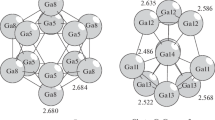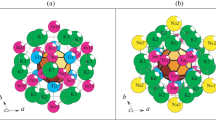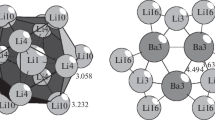Abstract
We studied in tight-binding approximation involving spν hybridization (ν=2,3), some Si2Cn (n=3 to 42) microclusters. We then investigated, on one hand, fragments of fullerene-like structures (sp2), and on the other hand, nanodiamonds (sp3) of adamantane-type or a 44-atom nanodiamond (with 2 inner atoms which are assumed to play the role of bulk atoms). We compared the stabilities, i.e. the electronic energies of these clusters, according to the various positions of the 2 Si atoms. Results are very different in the two kinds of hybridization. Besides, they can be analysed according to two different points of view: either the clusters are considered as small particles with limited sizes, or they are assumed to be used as models in order to simulate the Si-atom behaviour in very larger systems. In sp2 hybridization (fullerene-like geometries), the most stable isomer is always encountered when the 2 Si atoms build a Si2 group, and this result holds for both viewpoints quoted above. Conversely, in sp3 hybridization (nanodiamonds), since Si atoms “prefer” sites having the minimum connectivity, they are never found in adjacent sites. We see that with a simple and fast computational method we can explain an experimental fact which is very interesting such as the relative position of two heteroatoms in the cluster. This enhances the generality and the fecondity in the tight binding approximation due essentially to the link between this model and the graph theory, link based on the topology of the clusters.
Similar content being viewed by others
References
M. Pellarin, C. Ray, P. Mélinon, J.L. Lermé, J.L. Vialle, P. Kéghélian, A. Pérez, M. Broyer, Chem. Phys. Lett. 227, 96 (1997)
M. Pellarin, C. Ray, J.L. Lermé, J.L. Vialle, M. Broyer, X. Blase, P. Kéghélian, P. Mélinon, A. Perez, Eur. Phys. J. D 9, 49 (1999)
C. Ray, M. Pellarin, J.L. Lermé, J.L. Vialle, M. Broyer, X. Blase, P. Mélinon, P. Kéghélian, A. Perez, Phys. Rev. Lett. 80, 5365 (1998)
E.A. Rohlfing, D.M. Cox, A. Kaldor, J. Chem. Phys. 81, 3322 (1984)
E. Dornenburg, H. Hintenberger, Z. Naturforsch. 14a, 765 (1959)
M. Leleyter, J. Microsc. Spectrosc. Electron. 14, 61 (1989)
J.M. Rintelman, M.S. Gordon, J. Chem. Phys. 115, 1795 (2001)
M. Leleyter, J. Microsc. Spectrosc. Electron. 7, 221 (1982)
J. Leclercq, G. Pascoli, M. Leleyter, M. Comeau, AIP Conference Proc. 312, 595 (1994)
A.J. Streitwieser, Molecular Orbital Theory for Organic Chemists (Wiley, New-York, 1961)
Y. Wang, T.F. George, D.M. Lindsay, A.C. Beri, J. Chem. Phys. 86, 3493 (1987)
T. Ebbesen, in Le Carbone dans tous ses états, edited by P. Bernier, S. Lefrant (Gordon and Beach, 1997), pp. 183–207
R.C. Haddon, Science 261, 1545 (1993) (cited by T. Ebbensen [12])
E. Sandré, F. Cyrot-Lackmann, in Le Carbone dans tous ses états, edited by P. Bernier, S. Lefrant (Gordon and Beach, 1997), pp. 275–325
T. Wakabayashi, K. Kikuchi, H. Shiromaru, S. Suzuki, Y. Achiba, Z. Phys. D 26, S258-S260 (1993)
P. Joyes, Les Agrégats inorganiques élémentaires (EDP Sciences, Les Ulis, 1990), p. 224
M. Leleyter, Transdiam 1 (1999)
G. Verhaegen, J. Chem. Phys. 49, 4696 (1968)
M. Leleyter, P. Joyes, J. Phys. 36, 343 (1975)
Author information
Authors and Affiliations
Corresponding author
Rights and permissions
About this article
Cite this article
Leleyter, M., Olivi-Tran, N. Tight-binding study of Si2Cn (n = 3 to 42) fullerene-like or nanodiamonds microclusters: are Si atoms isolated or adjacent?. Eur. Phys. J. D 50, 153–163 (2008). https://doi.org/10.1140/epjd/e2008-00209-9
Received:
Revised:
Published:
Issue Date:
DOI: https://doi.org/10.1140/epjd/e2008-00209-9




